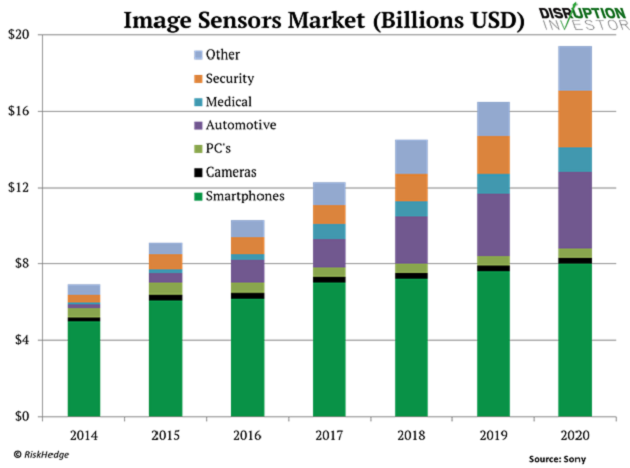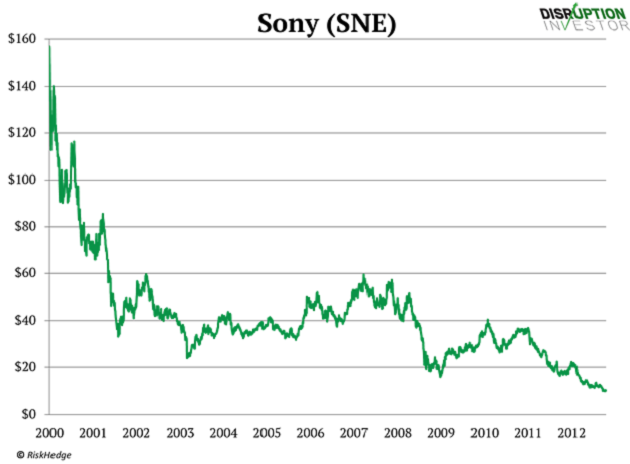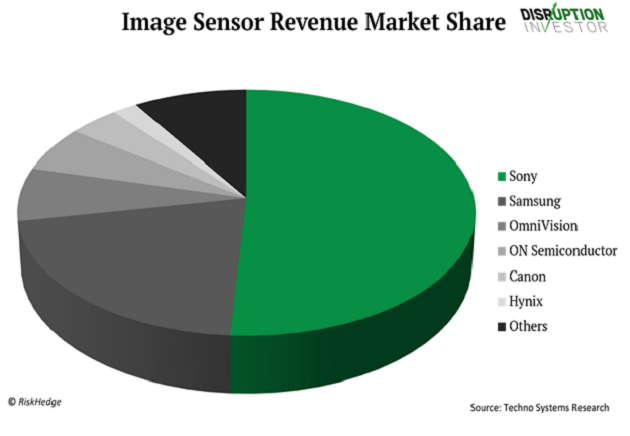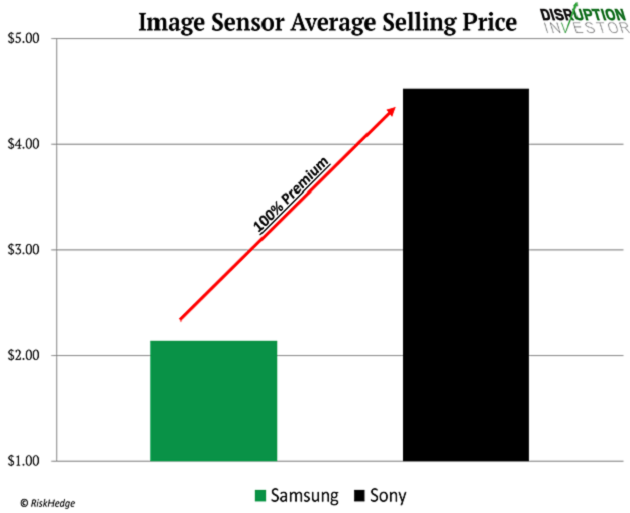How Sony Is Fueling the Computer Vision Boom
Companies / Tech Stocks Aug 03, 2020 - 02:34 PM GMTBy: Stephen_McBride
He didn’t know it at the time, but in 1990 Eric Fossum started a revolution. In the early ‘90s, NASA was firing rockets into orbit every other month. And to take images of outer space, each spacecraft was equipped with cameras.
The problem was, these cameras were absolutely huge—roughly as big as a double-door fridge. Cameras used on spacecraft are similar to digital cameras, except they have to be a lot tougher. And they required tons of heavy wiring to work.
So NASA hired hotshot engineer Eric Fossum straight from Yale, and tasked him with miniaturizing NASA’s cameras. Within two years, Fossum created a “camera-on-a-chip”—a new type of image sensor that was smaller and consumed 100X less power.
Image sensors are tiny computer chips that essentially give cameras a set of “eyes.” They process light from the outside world and transform it into a bunch of 1s and 0s, allowing cameras to render images. Fossum’s “camera-on-a-chip” helped NASA slash the size of its cameras. But more important, his invention laid the groundwork for digital cameras and camera phones.
Today, There’s an Image Sensor Behind Every Camera Lens
You can see the sensor inside a smartphone here:
The rise of smartphones has been a boon for the sensor industry. Before camera phones, sensors were mostly used in digital cameras. And even during their best year ever, camera sales peaked at 121 million units in 2010.
But last year 1.4 billion smartphones shipped around the world. Today over five billion people across the globe own a smartphone… and most of them have at least one image sensor inside. In 2010, total image sensor sales were under $2 billion/year. Sensor sales to smartphone makers alone will hit $8 billion this year.
And the market for image sensors is set to explode again. These days sensors aren’t only inside cameras, but cars, security cameras, medical devices, drones, grocery stores, and factories. In fact, image sensors are in practically everything today, as you can see:

Image sensor sales are expected to hit $29 billion/year by 2024 as they ride this new wave of growth.
Cameras with Brains
Remember, image sensors give cameras a set of “eyes.” These tiny chips allow machines to convert what they see in the real world into digital photographs. But having a set of eyes isn’t the same as being able to “see.”
Until recently, computers have never been able to master vision. Even in 2012, the world’s best image-recognition computer was still laughably bad at recognizing images. But Alex Krizhevsky’s “big breakthrough” changed everything. AlexNet marked the first time in history a machine could identify objects better than a human.
Now that we have computer vision, image sensors have become more important than ever. Think about what computer vision does: it transforms every camera lens into a pair of eyes that can understand what it sees.
Image sensors are no longer simply cameras that take photos. With computer vision, they’re eyeballs that allow machines to “see.” Images become a whole new input for computers—like numbers or text. Our cameras are the new keyboards. Every image and YouTube video can be searched and analyzed for the first time ever.
The powerful combination of computer vision and image sensors has handed machines a new superpower. Image sensors will soon be in practically every computer in the world—just like almost every machine is hooked up to the internet.
As demand for image sensors soars, a “hall-of-fame” disruptor stands to make billions.
Reinvented: A “Hall-of-Fame” Disruptor
Nobutoshi Kihara just wanted to listen to Beethoven’s symphonies during his long intercontinental plane trips without lugging around a giant tape player. Kihara was the co-founder of Japanese electronics giant Sony (SNE). So in 1978 he had some of its engineers build a prototype. Kihara’s idea led to the creation of one of the most successful products in history–the Sony Walkman.
In 1979, Walkman’s were flying off the shelves for $200 a piece—over $700 in today’s money. In fact, when they went on sale at Bloomingdale’s in New York City, the waiting list stretched to two months.
The Walkman was the first real portable music player. Boomboxes had been around for a while, but the handheld tape player changed how we listened to music, forever. In fact, Sony was the king of making stuff we all wanted for decades.
Millions of ‘90s kids begged Santa for a Sony PlayStation video game console. Time magazine ranks the original PlayStation as the #1 bestselling product of all time. Sony was also the mastermind inventor behind CD players, color TVs, HD camcorders, floppy disks, transistor radios, and tape recorders.
Its stock soared 500% in the ‘90s as it dominated TVs, video games, and portable music players. But then Sony ran out of big new ideas. It had a series of flops, like blue-ray DVDs. And its Walkman was disrupted by Apple’s iPod. Its stock began a long slump in 2000 that saw it shed 92% of its value over the next 13 years:

But after two decades lurking in the shadows, Sony is reinventing itself…
Sony’s Crown Jewel
Image sensors are the driving force behind Sony’s revival into a world-dominating disruptor. Sony has been making sensors for decades. Its first product was an “electronic eye” installed on All Nippon Airways jumbo jets in 1980 to project images of landing and takeoff from the cockpit.
But for years, image sensors were such a small slice of Sony’s business they were a rounding error. In fact, they got lumped in with the “other devices,” which included batteries and tape recorders.
But the growth in sensor sales over the past three years has been nothing short of remarkable. This year Sony will generate more profits from imaging than any of its other business lines. Sensors are on track to generate $1.92 billion in profits… 10% more than Sony’s long-established gaming arm.
Sony absolutely dominates the image sensor industry, accounting for over 50% of global sales:

In fact, the head of Sony’s imaging business recently told Bloomberg: “We are having to apologize to customers because we just can’t make enough.” Right now, its factories are running 24 hours a day trying to meet demand. And it’s pumping $6 billion into a new plant to boost output.
The battle among smartphone firms to make better cameras has been a boon for Sony. It controls over 70% of the smartphone sensor market. And it’s been the exclusive maker of image sensors for every iPhone since 2010.
Here’s the thing: the iPhone 4 had a single 5-megapixel camera. The newest iPhone is kitted out with three 12-megapixel cameras. Higher-resolution cameras need larger and bigger image sensor—which Sony can charge more for. So as cameras continue to improve, Sony sensor sales will keep soaring.
And when it comes to quality, Sony is in a league of its own. Its image sensors are so far ahead, it charges 2X as much as its closest competitor.

And now Sony is developing a new type of sensor that will supercharge computer vision. Sony’s DepthSense sensor enables cameras to see the world in 3D.
It works by sending out invisible laser pulses and measures how long they take to bounce back off objects. This helps cameras take clearer photos by precisely selecting where to focus, and what background to blur out.
And in computer vision terms, Sony’s 3D sensors will give machines “superhuman” vision. The world’s largest automaker, Toyota, is already using these sensors in its self-driving cars. The sensors help the car create 3D maps of roads in real time, allowing it to see roads and obstacles at 1.5 times the distance compared to existing sensors.
Sony’s 3D sensors are also inside the new Apple iPad Pro for augmented realty applications. And it will be in the new iPhone to construct a more accurate map of your face.
Right now, Sony’s world-class imaging business is flying under the radar. But as the computer vision boom takes off, I expect the stock to attract a lot of hype. And with image sensors becoming a larger part of Sony’s business, it could easily soar 300%+ in the coming years.
The Great Disruptors: 3 Breakthrough Stocks Set to Double Your Money"
Get my latest report where I reveal my three favorite stocks that will hand you 100% gains as they disrupt whole industries. Get your free copy here.
By Stephen McBride
© 2020 Copyright Stephen McBride - All Rights Reserved Disclaimer: The above is a matter of opinion provided for general information purposes only and is not intended as investment advice. Information and analysis above are derived from sources and utilising methods believed to be reliable, but we cannot accept responsibility for any losses you may incur as a result of this analysis. Individuals should consult with their personal financial advisors.
© 2005-2022 http://www.MarketOracle.co.uk - The Market Oracle is a FREE Daily Financial Markets Analysis & Forecasting online publication.



